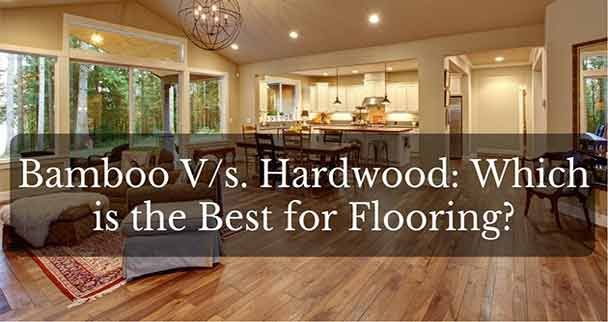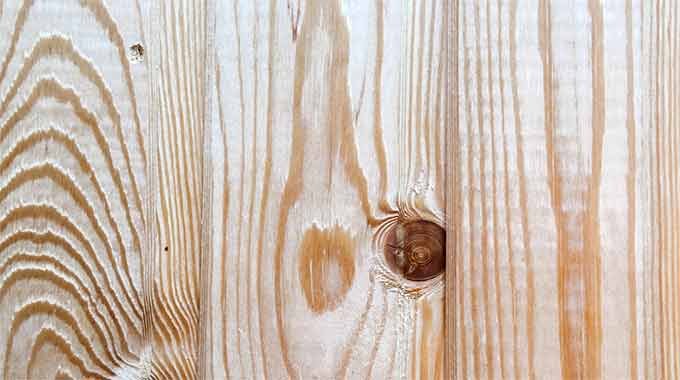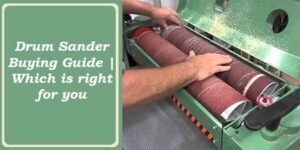Bamboo Vs Hardwood Flooring: Which is the Best
Have you noticed the uncanny resemblance between the two types of flooring materials – Bamboo and Hardwood? These pertain to their appearance, touch, and characteristics. Nevertheless, there are differences between these two types of flooring materials: bamboo is obtained from grass; hardwood is engineered from trees. As a result, there are certain attributes that set these two kinds of floor-based materials apart.
In the past, wooden materials were favored by the patrons for their home building purposes because of their nature which is inclusive of versatility and opulent look; nowadays, there seems to be a shift in this trend. The demand for bamboo is rising in popularity due to its woody-like facade.
If you have to make a choice between these two varieties, the following details may be useful. We have compared both the flooring options according to the various aspects.
Table of Contents
Bamboo Vs Hardwood: Which is the Best for Flooring?
1. Hardness
Bamboo
The hardness ratio of natural bamboo is within the range of 1300-1400. Bamboos have to endure the carbonization process due to which they develop a darkened color: they are subjected to heated and pressurized environments for giving them a darker shade.
These treatments tend to cause their weakening and affect their durability. The hardness ratio of carbonized bamboo is in the range of 1000-1100; it is dependent on the time for which they undergo the treatment. The dark hues of bamboo are known to be of a softer variety.
Hardwood
There are various species of hardwoods that are used for constructing floors. The lower end varieties have a hardness ratio of 600-900; the higher end versions are amid 2500-3500.
2. Composition
Bamboo
There are varied bamboo-based species that are used for flooring purposes: their properties are known to differ. Moso bamboo is rated high regarding quality, and they are harder than many types of hardwoods: they are harvested at the age of 5-7 years when they are the densest. Stranded or engineered bamboo are more durable as compared to the natural varieties of bamboo; during the processing stage, they are cut, pressed, bonded, stripped, and boiled. Lighter shades of bamboos are harder than the darkened versions; as a result of the carbonization process, they become darker and softer.
Hardwood
Natural hardwood that is used during the construction of hardwood floors comprises of lumber derived from forests. The rates of the wood are dependent on the tree from which it is acquired. The steeper varieties are gotten from teak, wenge, and mahogany. Pinewood is soft and inexpensive. For moisture-prone regions, engineered hardwoods are suitable: a layer of hardwood is fitted above fiberboard or plywood for permitting them to expand and contract.
3. Exterior Look
Bamboo
Normally, the different kinds of bamboos are consistent in their outward form. They are similar to hardwoods in appearance but are distinctive in various ways. Horizontal rows are visible on their surface. Also, their unique golden color is tempered, as a result of carbonization, for imparting a darker shade to the materials.
Bamboos are not graded or sorted according to features such as color or homogeneity; you will notice that there are variations in the different planks of bamboos. Some persons might find this scattered look appealing; others may dislike the inconsistencies.
Hardwood
There are divergent species of hardwood flooring; they are distinctive regarding patterns, feel, and appearance. Additionally, they are cut in various ways due to which they differ in grain consistency. Moreover, there are numerous grades that are available. Hence, the customers have a wide assortment of hardwoods to choose from.
4. Moisture Resistance
Bamboo
These types of materials are known to suffer from similar problems as hardwoods. Nevertheless, they are grass and have the ability to resist moisture damage to a greater extent than hardwoods. Furthermore, they have a tendency to repel mildew, molds and hamper their development.
Hardwood
These floor-based materials are highly prone to moisture damage. They can be subjected to sealing and finishing for avoiding liquids to penetrate; however, being exposed to water for prolonged durations can result in their damage. Floods can cause the deterioration of these materials. Additionally, the leakage of water can be responsible for the development of mildew, rot, or molds.
5. Environmental Conditions
Bamboos
There are various properties for which bamboos have gained popularity; these are inclusive of their eco-friendly nature. They develop at a rapid pace and attain full length in around 4-5 years. Moreover, their roots are not cut after they are harvested; due to which they can grow continually and do not need to be replanted. Additionally, they are biodegradable and recyclable.
Nonetheless, they have some drawbacks: firstly, they are planted in the Southeastern region, and their transportation requires a huge amount of expenditure to be incurred; secondly, their manufacturing course is harder as compared to the processing of wood logs; their production involves additional carbon dioxide expenses and greater environmental damage.
Hardwood
In comparison to bamboos, hardwood trees take about 20 years to become fully matured; therefore, the regeneration of these materials takes longer. Also, waste is generated for producing wooden floors because the logs have to be sawn for manufacturing boards and planks.
These materials are also advantageous because more material is available after they have been harvested, which compensates for their longer duration to become fully developed. Also, there is a need to cut down the trees only once in 20 years and not every five years or so. Trees are also grown in numerous regions, and the woods are widely source-able for the local factories.
6. Quality Concerns
Bamboo
There are no quality assurances when it comes to bamboos for flooring items. No guarantees are placed on their quality, reliability, and their sources. Therefore, you remain unsure about the quality of these products. Also, there is no way of knowing whether they were developed in an eco-friendly manner or not. Your best bet is to make your purchases from a renowned dealer.
Hardwood
There are many organizations, including the National Oak Floor Manufacturers Association, that rate hardwoods by their uniformity, shape, moisture content, size, consistency of shade, and varied features. Here, you are aware about the quality of the goods during their purchase.
7. Expenditure
Bamboo
Where bamboos for flooring options are concerned, the lower cost varieties are easily deteriorate-able, while the expensive ones rate higher in durability. The harder versions are treated with harsh chemicals, which justify their increased costs. Prolonged exposure to sunlight can result in bamboos losing some of their color. Additionally, moist environments can lead to their corrosion.
Hardwood
Overall, hardwood flooring is heavier on the pocket when compared to bamboo floors. These materials can become stained or discolored due to rising humidity levels, changing weather conditions, subjection to sunlight, and exposure to water. For this reason, they are not installed in kitchens and bathrooms.
8. Maintenance
Bamboo
As part of the maintenance measures of bamboo floors, cleaning the surfaces with mops and brooms can be pursued. It is best to avoid damp mops on these planes; however, if the need arises, wring out the excess water from the mops before applying it on the floors. Detergents that are suited for hardwoods can be used on bamboos. If they become worn-out, you can opt for refurbishing them rather than replacing them.
Hardwood
Maintaining hardwood floors is comparatively easier. The surfaces should be wiped with a damp cloth for cleaning the dirt and grime. The damaged or dented portions are repairable, or they are replaceable with matching ones.
There are pros and cons of both bamboos and hardwoods for floor materials. If sustainability is an important consideration when making a choice between these two kinds, then it may be useful to bear in mind that bamboos are a type of grass and takes only 5-7 years to reach the maturity stage. Additionally, bamboos are harder than hardwoods and more resistant to dents or scratches. However, engineered hardwoods are also toughened.
If the look and maintenance of the floors are a matter of concern to you, then hardwoods stand as a better choice. They are more appealing to the eyes, and their maintenance is easy.
The related expenses are another important factor that you may want to ponder upon when selecting amongst the two types. In such cases, it may be noted that bamboos can be bought at a cheaper rate than hardwoods. Both expensive and inexpensive varieties of bamboos may be availed, but you must be cautious about the cheaper bamboo-based range.








Post Comment